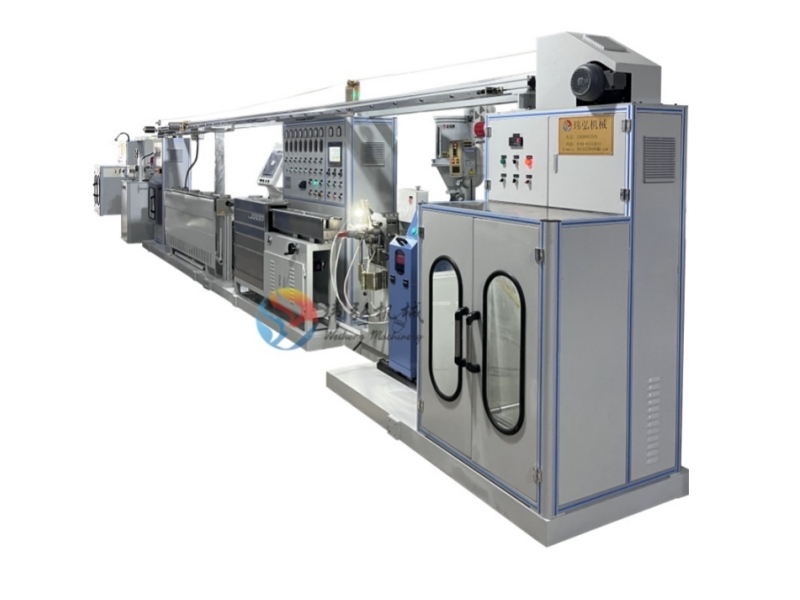The Comprehensive Guide to Wire and Cable Manufacturing Process
Mar 10, 2025
The wire and cable industry is a cornerstone of modern infrastructure, supporting everything from power transmission to telecommunications. As a manufacturer of wire and cable machinery based in Guangdong, China, we understand the importance of precision and efficiency in every step of the production process. In this blog, we’ll take you through the detailed wire and cable manufacturing process, highlighting the essential machinery involved.
1. Raw Material Preparation
The production of wire and cable begins with the preparation of high-quality raw materials. The primary materials include copper or aluminum for conductors, and polymers like polyethylene (PE) or polyvinyl chloride (PVC) for insulation and sheathing. These materials must undergo rigorous quality checks to ensure they meet industry standards.
2. Wire Drawing Process
The first step in manufacturing is wire drawing, where copper or aluminum rods are pulled through a series of dies to reduce their diameter and increase their length. This process is carried out using a *wire drawing machine*, which ensures the wire achieves the desired thickness and strength. The *drawing dies* used in this process are critical for maintaining precision.
3. Annealing Process
After drawing, the wires undergo annealing to improve their flexibility and conductivity. This involves heating the wires in an *annealing furnace* to a specific temperature and then cooling them gradually. The **continuous annealing machine** is commonly used to prevent oxidation and ensure uniform treatment.
4. Stranding and Conductor Formation
To enhance flexibility and durability, multiple wires are twisted together using a *stranding machine*. This process, known as stranding, can be done in various configurations, such as concentric stranding or bunch stranding. For power cables, a *compacting machine* is often used to compress the stranded conductors into a more compact shape, such as a sector or circle.
5. Insulation Extrusion
Insulation is applied to the conductors using an extrusion machine. This machine melts the polymer material and coats the conductor uniformly. The *cross-linked polyethylene (XLPE) insulation line* is particularly popular for high-voltage cables due to its excellent electrical properties. Key parameters like eccentricity, smoothness, and density are closely monitored during this process.
6. Cabling Process
For multi-core cables, individual insulated conductors are twisted together using a *cabling machine*. This process ensures the cable maintains its shape and flexibility. A *filling machine* is often used to add filler materials, ensuring the cable remains round and stable. Additionally, a *binding machine* secures the cores to prevent movement.
7. Inner Sheathing
To protect the insulated cores from mechanical damage, an inner sheath is applied. This can be done using an *extrusion machine* for a seamless layer or a *taping machine* for a wrapped layer. The choice depends on the cable’s intended use and environmental conditions.
8. Armoring Process
For cables that require additional mechanical protection, an armoring process is employed. A *steel tape armoring machine* or *wire armoring machine* is used to apply steel tapes or wires around the cable. This step is crucial for cables used in underground or underwater installations.
9. Outer Sheathing
The final layer, the outer sheath, is applied using an *extrusion machine*. This layer provides protection against environmental factors like moisture, chemicals, and UV radiation. The *PVC sheathing line* is widely used for its durability and cost-effectiveness.
10. Quality Control and Testing
Before packaging, the cables undergo rigorous testing to ensure they meet industry standards. A *spark tester* checks for insulation defects, while a *tensile testing machine* evaluates mechanical strength. Other tests include *insulation resistance testing* and *high-voltage testing*.
11. Packaging and Delivery
Once the cables pass all quality checks, they are wound onto reels using a *coiling machine* and packaged for delivery. Proper packaging ensures the cables remain undamaged during transportation.
The wire and cable manufacturing process is a complex yet fascinating journey that transforms raw materials into essential components of modern infrastructure. At our factory in Guangdong, China, we specialize in producing state-of-the-art machinery for every step of this process, from *wire drawing machines* to *extrusion lines* and *armoring machines*. By understanding the intricacies of this process, we can better serve our clients and contribute to the growth of the global wire and cable industry.
If you’re looking for reliable and efficient wire and cable machinery, feel free to contact us. Let’s power the future together!

